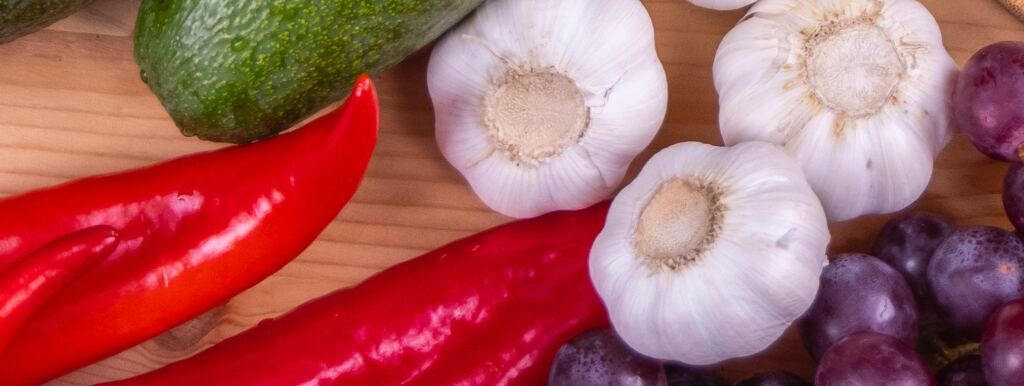
- Understanding the FODMAP Diet
- Foods to Avoid on the FODMAP Diet
- – Wheat and other gluten-containing grains
- – Dairy products such as milk, cheese, and yogurt
- – Certain fruits such as apples, pears, and mangoes
- – Vegetables such as onions, garlic, and mushrooms
- – Legumes such as beans, lentils, and chickpeas
- – Sweeteners such as honey, agave, and high-fructose corn syrup
- Foods to Eat on the FODMAP Diet
- – Gluten-free grains such as rice, quinoa, and oats
- – Lactose-free dairy products such as lactose-free milk and hard cheeses
- – Fruits such as bananas, blueberries, and oranges
- – Vegetables such as carrots, spinach, and zucchini
- – Protein sources such as chicken, fish, and tofu
- – Sweeteners such as maple syrup and stevia
- Planning Meals on the FODMAP Diet
- – Start with a protein source such as chicken or tofu
- – Add in low-FODMAP vegetables such as carrots and spinach
- – Include a small serving of a low-FODMAP grain such as rice or quinoa
- – Use low-FODMAP herbs and spices to add flavor
- Tips for Eating Out on the FODMAP Diet
- – Look up the menu online ahead of time and identify low-FODMAP options
- – Ask the server about ingredients and preparation methods
- – Avoid sauces and dressings that may contain high-FODMAP ingredients
- – Consider bringing your own low-FODMAP snacks or meal options
- The Benefits of the FODMAP Diet
- Potential Risks and Side Effects of the FODMAP Diet
- – Nutrient deficiencies if the diet is not properly planned
- – Reduced diversity in the gut microbiome
- – Increased risk of disordered eating behaviors
- Working with a Dietitian on the FODMAP Diet
- FODMAP Diet Recipes
- – Quinoa and vegetable stir-fry
- – Chicken and vegetable skewers
- – Salmon and vegetable foil packets
- – Low-FODMAP smoothies
- – Gluten-free oatmeal with banana and almond butter
- Conclusion
Understanding the FODMAP Diet
The FODMAP diet is a type of elimination diet that helps people with irritable bowel syndrome (IBS) manage their symptoms. FODMAP stands for fermentable oligosaccharides, disaccharides, monosaccharides, and polyols. These are types of carbohydrates that are poorly absorbed in the small intestine and can cause digestive issues such as bloating, gas, and diarrhea. The FODMAP diet involves avoiding foods that are high in FODMAPs for a period of time and then reintroducing them one at a time to identify which ones trigger symptoms.
Foods to Avoid on the FODMAP Diet
There are many foods that are high in FODMAPs and should be avoided on the FODMAP diet. Some of the most common high-FODMAP foods include:
– Wheat and other gluten-containing grains
– Dairy products such as milk, cheese, and yogurt
– Certain fruits such as apples, pears, and mangoes
– Vegetables such as onions, garlic, and mushrooms
– Legumes such as beans, lentils, and chickpeas
– Sweeteners such as honey, agave, and high-fructose corn syrup
Foods to Eat on the FODMAP Diet
While there are many foods to avoid on the FODMAP diet, there are also plenty of foods that are safe to eat. Some examples of low-FODMAP foods include:
– Gluten-free grains such as rice, quinoa, and oats
– Lactose-free dairy products such as lactose-free milk and hard cheeses
– Fruits such as bananas, blueberries, and oranges
– Vegetables such as carrots, spinach, and zucchini
– Protein sources such as chicken, fish, and tofu
– Sweeteners such as maple syrup and stevia
Planning Meals on the FODMAP Diet
Planning meals on the FODMAP diet can be challenging, but it is possible with some careful planning. It’s important to focus on including a variety of low-FODMAP foods in each meal to ensure that you are getting all of the nutrients you need. Some tips for planning meals on the FODMAP diet include:
– Start with a protein source such as chicken or tofu
– Add in low-FODMAP vegetables such as carrots and spinach
– Include a small serving of a low-FODMAP grain such as rice or quinoa
– Use low-FODMAP herbs and spices to add flavor
Tips for Eating Out on the FODMAP Diet
Eating out on the FODMAP diet can be challenging, but it is possible with some careful planning. Some tips for eating out on the FODMAP diet include:
– Look up the menu online ahead of time and identify low-FODMAP options
– Ask the server about ingredients and preparation methods
– Avoid sauces and dressings that may contain high-FODMAP ingredients
– Consider bringing your own low-FODMAP snacks or meal options
The Benefits of the FODMAP Diet
The FODMAP diet has been shown to be effective in reducing symptoms of IBS in many people. By identifying and avoiding high-FODMAP foods, individuals can experience relief from bloating, gas, and diarrhea. Additionally, the FODMAP diet can help individuals identify which specific foods trigger their symptoms, allowing them to make more informed decisions about their diet in the future.
Potential Risks and Side Effects of the FODMAP Diet
While the FODMAP diet can be effective in reducing symptoms of IBS, it is important to note that it is a restrictive diet and may not be appropriate for everyone. Some potential risks and side effects of the FODMAP diet include:
– Nutrient deficiencies if the diet is not properly planned
– Reduced diversity in the gut microbiome
– Increased risk of disordered eating behaviors
Working with a Dietitian on the FODMAP Diet
Working with a registered dietitian who is knowledgeable about the FODMAP diet can be helpful in ensuring that the diet is properly planned and that all nutrient needs are being met. A dietitian can also help individuals identify trigger foods and develop a long-term plan for managing IBS symptoms.
FODMAP Diet Recipes
There are many delicious and nutritious recipes that are low in FODMAPs and can be enjoyed on the FODMAP diet. Some examples of FODMAP-friendly recipes include:
– Quinoa and vegetable stir-fry
– Chicken and vegetable skewers
– Salmon and vegetable foil packets
– Low-FODMAP smoothies
– Gluten-free oatmeal with banana and almond butter
Conclusion
The FODMAP diet can be an effective tool for managing symptoms of IBS. By avoiding high-FODMAP foods and working with a dietitian, individuals can experience relief from digestive issues and identify trigger foods. While the FODMAP diet may be challenging to follow at first, it can lead to long-term improvements in digestive health and overall well-being.






